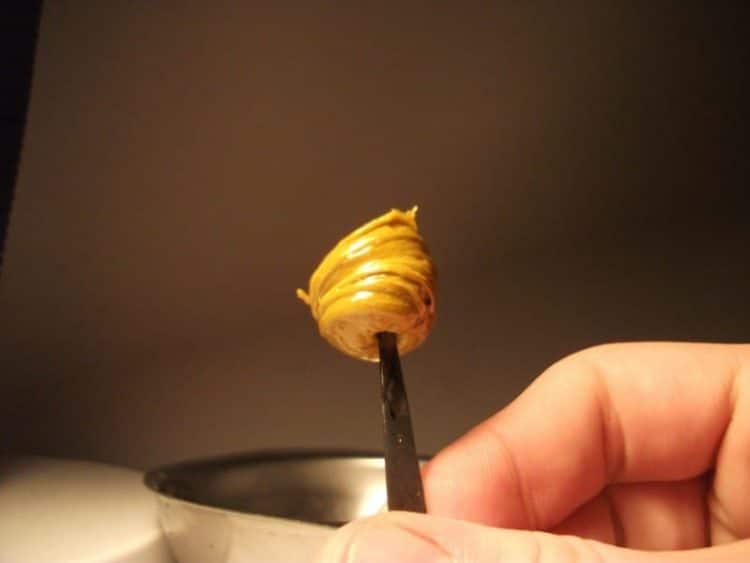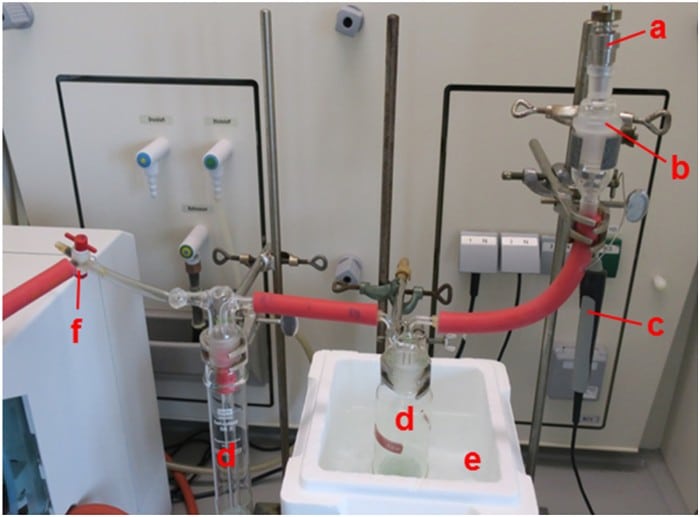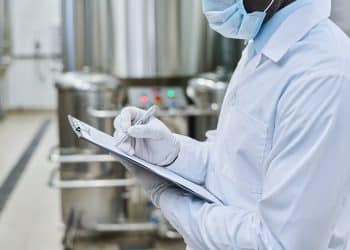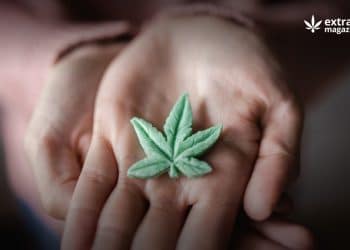Research Demonstrates Increased Efficiency of Dabbing Compared to Smoking
Dabbing, the act of vaporizing cannabis concentrates on a heated nail, has become a widespread cannabis consumption method. And as its proliferation has increased, so has the worry in public health circles concerning the high THC content and potential for adverse effects. [1]
To better understand the chemical process which underlies dabbing, a study in Germany aimed to examine the differences in lung availability of cannabinoids between traditional cannabis flower combustion and concentrate vaporization. [2] In other words, exactly how many more cannabinoids can our lungs theoretically be exposed to when you dab versus when you smoke?
The creators of the study developed two novel devices to simulate the collection of smoked vapors, shown below: one for cannabis plant samples (Figure 1) and the other from dabbing concentrates (Figure 2). Briefly, one gram of cannabis or 160-230 mg of concentrate was applied to part a (Figures 1 and 2) of the devices and combusted for 2.2 minutes or vaporized in 5 seconds, respectively. Vapors were collected as condensation on glass beads inside c or d, respectively, by a vacuum generated from f in both devices. It’s interesting to note that the temperature of the vapors measured immediately at the inlet to the device was much higher in cannabis smoke (between 60-92°C) than in concentrates (36-50°C, average = 44°C). The condensates were then collected and reconstituted in methanol.
Figure 1. The apparatus for collecting cannabis smoke condensates. Components: a glass frit; b thermometer; c gas washing bottle; d ice bath; e liquid nitrogen flask; f connection to water jet pump.
Figure 2. Apparatus for collecting vapor condensates of dabbed cannabis concentrates. Components: a titanium nail; b glass reducing/enlarging adapters; c thermometer; d gas washing bottle; e ice bath; f connection to oil pump.
The researchers measured the concentration of THCA, CBDA, THC, and CBD in the original flower or concentrate, and compared them to the concentrations of cannabinoids found in the reconstituted vapor condensate. Their results showed the decarboxylation of THCA and CBDA was complete in both smoking and dabbing, with all of the acidic species being converted to their pharmacologically-active siblings in either case. But, by dividing the concentration of THC or CBD in the vapor versus that in the original sample, the results showed that the dabbing vapors retained 75.5% of the total THC content, whereas cannabis flower smoke only retained 26.7%—almost a three-fold difference. The results for cannabis flower are even likely to be hyperinflated, because unlike real smoking conditions, the entire gram was absorbed in one continuous cycle, whereas most real-life scenarios involve cyclic smoking cycles and loss due to side-stream smoke. [3-4]
It seems dabbing may be a more efficient method of consuming cannabinoids compared to smoking, and this understanding may guide not just recreational consumers but medicinal cannabis users as well. However, this increased cannabinoid lung availability means dabbing can lead to more serious side effects from cannabis consumption. While hard data is not yet available on this topic, the general consensus when it comes to THC consumption seems to be “start low, go slow, and stay low.” [5]
References
- Raber, J. et al. “Understanding dabs: contamination concerns of cannabis concentrates and cannabinoid transfer during the act of dabbing”. J Toxicol Sci. 2015; 40(6); 797-803 [Times cited = 90, Journal impact factor = 1.732]
- Hädener, M. et al. “A preliminary investigation of lung availability of cannabinoids by smoking marijuana or dabbing BHO and decarboxylation rate of THC- and CBD-acids”. Forensic Sci Int. 2019; 295: 207-212 [Times cited = 0, Journal impact factor = 1.947].
- Azorlosa, J.L. et al. “Marijuana smoking: effects of varying puff volume and breathhold duration”. J Pharmacol Exp Ther. 1995 Feb;272(2):560-9 [Times cited = 88, Journal impact factor = 1.383].
- Pérez-Reyes, M. “Marijuana smoking: factors that influence the bioavailability of tetrahydrocannabinol”. NIDA Res Monogr. 1990; 99: 42-62 [Times cited = 25, Journal impact factor = N/A].
- MacCallum, C.A. and Russo, E.B. “Practical considerations in medical cannabis administration and dosing”. Eur J Intern Med. 2018; 49: 12–19 [Times cited = 61, Journal impact factor = 3.282].
Image Credit: Wikimedia Commons














